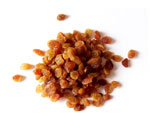New Guidelines Raise Awareness of a Rare Stroke
Posted by: admin on: May 6, 2011
Stroke, till recently, was taken as an Acute Vascular (Arterial) Event with clinicians labeling patients as Stroke MCA territory/ Stroke ACA territory. Cerebral venous thrombosis related strokes, although rare, but more so in pregnant women/ those on OCPs have been identified as leading to significant morbidity.
Team@CMHF
The American Heart Association for the first time released guidelines for clinicians to help detect and treat cerebral venous thrombosis, a rare stroke that disproportionately affects young people, especially women who are pregnant or on oral contraceptives, or who just gave birth.
The guidelines include an algorithm for diagnosing and managing cerebral venous thromboembolism (CVT), which is caused by a clot in the dural venous sinuses, veins that drain blood from the brain toward the heart.
Approximately five people per million develop CVT each year, accounting for 0.5%-1% of all strokes. In the largest cohort study of patients diagnosed with CVT, 54% were on oral contraceptives, 34% had an inherited or acquired prothrombotic condition, and 21% were pregnant or in the immediate postpartum period. Other predisposing conditions included infection in 12%, the presence of certain drugs in 8%, cancer in 7%, and other hematologic disorders in 12%. (Some patients had more than one predisposing condition.)
Anticoagulation is the usual first-line therapy, with IV heparin or subcutaneous low-molecular-weight heparin in patients without contraindications. There is only limited, low-grade evidence for alternative treatments, such as endovascular therapy or decompressive hemicraniectomy which should be reserved for patients with progressive neurological deterioration despite anticoagulation therapy and the best medical treatment.
It is pointed out that the main controversy in CVT is focused on how best to treat it, particularly with regard to the safety and efficacy of anticoagulation with heparin and heparinoids (especially in patients with CVT-related intracranial hemorrhage) and the evolving use of endovascular techniques. “The real strength of these guidelines is its clear recommendation that the first-line medical treatment for CVT is the use of intravenous heparin or subcutaneous heparinoids, including in patients with CVT-related intracranial hemorrhage.”
The safety and efficacy of heparin in these patients seems pretty well established, and this strong statement will hopefully help ease some of the fears(of an increased risk of additional hemorrhage) and increase the use of heparin in this patient population. Endovascular therapies should be reserved for patients who deteriorate despite the use of heparin. This population is rare. There has been a variety of case reports regarding endovascular therapies in CVT patients with intracranial hemorrhage – those felt to be at high risk for heparin therapy. The hope is that invasive procedures will no longer be offered in place of heparin therapy.
Search
- drchasrani: Difficult to get such a data, authenticated at that. Try Times of India online library
- rakesh pore: hi, where can i get genuine information about "10 most common drugs sold in india?" i want it for a local project
- nilesh dutta: sir, Plz give detail about MBA Sports Management Thanks and Regards


Leave a Reply